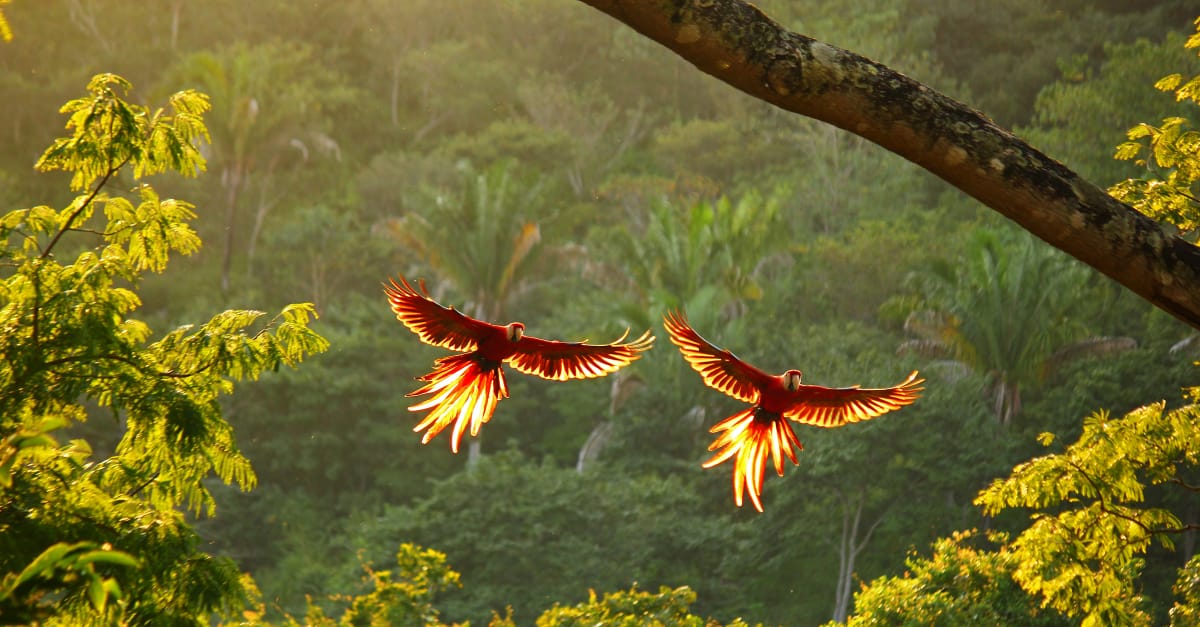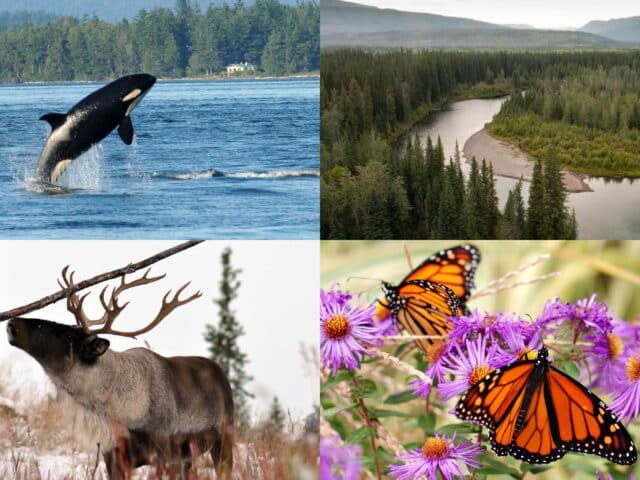- DEN Enews
- Posts
- DEN Enews
DEN Enews
All Saints / All Souls

All Saints and All Souls are special days in the Christian calendar when we remember and give thanks for the saints and those who have gone before us. There are a number of environmental saints including the most well known, Saint Francis of Assisi. Here is just a sample of the many with connections to the environment.
Saint Mother Theodore Guerin - (1798–1856) Born in France, she became a Sister of Providence and a teacher, but she also learned how to help the sick by using plants and herbs as medicines. After a move to Indiana, she found helpful herbs in the meadows and forests and used them to provide health care for sick people.
Saint Martin de Porres - (1579–1639) Martin was a lay brother in the Dominican monastery in Lima, Peru. He was in charge of the infirmary and also in charge of giving alms, or money and other help, to those in need. He became an expert in the use of plants for medicine. He founded an orphanage for abandoned children and also the first animal shelter in the New World. When mice found their way into the monastery kitchen to sample the grain there, Martin would say, “But they need to eat too.“
Servant of God Dorothy Day - (1897-1980) After a career as a reporter, Dorothy founded the Catholic Worker community. Realizing that a connection to nature made us truly human, the community began growing their own food and feeding others who came for assistance.
Saint Kateri Tekakwitha - (1656–1680) Saint Kateri was the daughter of a Mohawk father and an Algonguin mother and was the first Native American to be declared a saint. Kateri and her community regularly gave thanks for the creation around them, respecting and nurturing the natural world.
Just when you thought this chat about saints was done, this message was passed along from Bishop Sandra this morning. Coincidence or More of God working in mysterious ways?


Rev Tory Byrne and Rev Margaret Sagar joined the Climate Strike on Oct. 25th and were among those interviewed by CBC radio. Click on the link below and scroll down for the School Strike 4 Climate Halifax and click that link to hear the interview. https://www.cbc.ca/listen/live-radio/1-37-mainstreet-ns


For the Love of Creation is co-hosting a webinar on November 18 called See, Act, Learn for Climate Justice: Video Launch and Discussion, where we will screen the 6-minute video Coming Together for Climate Justice on Loss and Damage, hear from colleagues and Global South partners at COP29, and learn about advocacy around loss and damage funding. This event is being co-hosted by KAIROS Canada, ACT Alliance - Canada, Canadian Foodgrains Bank, and For the Love of Creation. English/French interpretation will be available. Registration is now open: https://us06web.zoom.us/meeting/register/tZUvceGuqTMiG91-vdJeTq2kd5DtrAIS4dX0

There are so many things happening around the province and many groups have newsletters that we urge you to click on to find out more.
Nova Scotia Environmental Network - In their newsletter register for their BioDiversity Caucus Webinar on Hope for Wildlife and their rehabilitation of wildlife. You are invited to join the Biodiversity Caucus and/or the Water Caucus
Save Our Old Forests - Listen to an interview with CBC and Nina Newington about the logging that took place at the proposed Beals Brook Wilderness Area and the need to protect old forests in Nova Scotia. Register for Forests and Health: Forest Bathing and Nature-based Wellness Workshop and a Live Wreath Workshop.
Sandy Lake - Sackville River Regional Park Coalition News - Read about water testing results and the impact of proposed developments. https://sandylake.org/wp-content/uploads/2024/10/Coalition-newsletter-Oct-2024.pdf
Annapolis Waterkeepers - Find out more about the issue with toxic dumps and their effects on wetlands. https://www.annapoliswaterkeepers.ca/2024/10/october-newsletter.html Also check out this very interesting article on environmental assessments https://www.annapoliswaterkeepers.ca/2024/09/the-fleecing-of-municipalities.html
If you attended Nocturne 2024 you may have been given one of the these badges? They represent a vow to climate action. Find out more by clicking on the website above. You may not have received a badge but you can still learn what each means and commit to an action for our world.

with thanks to Eva Evans & Jesse Hamilton
The Canadian federal government is considering a Fossil Fuel Advertising Act which would prohibit fossil fuel companies (including gas companies) from advertising their dangerous products to the public. This would be a game-changer for the climate and for health and safety! Sign the petition calling on Members of Parliament to support this important bill! The fossil fuel industry’s advertising needs to be controlled, just like we did with tobacco companies.
The collapse of biodiversity is one of the greatest crises our world is currently facing. The protection of all species and our precious ecosystems must be stepped up before it is too late. Biodiversity offsets, credits, and other market-based approaches are dangerous false solutions. What they do is perpetuate destruction instead of actually preventing or stopping it. This petition is asking for effective laws and regulations, and for a focus on financing climate and nature protection immediately. It is also calling for the recognition of the rights of the Indigenous Peoples, to finally phase out fossil fuels, to stop subsidies that continue destruction, and to put in measures that change production and consumption patterns. Join in standing together for future generations by pushing to make protective changes today.
More than 58,000 people have signed this petition trying to pressure banks to cut ties with the destructive coal giant Adaro. They bought up land surrounding the Indonesian village of Wonorejo, and now this town is a ghost town covered in coal ash. They have been destroying some of the last remaining North Kalimantan rainforests, the migration routes of critically endangered Hawksbill sea turtles, and the livelihoods of people employed in traditional agriculture, livestock, and fisheries in Indonesia. Big-name banks have been backing this project, but with support from people around the world the situation has been slowly changing. Please add your name to keep the pressure up and hold this company and these banks accountable.
The landmark summit on the global nature crisis was held in Canada in 2022. This is when countries agreed to a series of targets to halt and reverse biodiversity loss by 2030. The federal government has been following through on this plan, however many key actions have yet to be funded. The Nature Accountability Act has also been stalled in the House of Commons. This petition is about strengthening this bill and ensuring Canada's next budget includes funding to fully implement the 2030 Nature Strategy. Add your name to this letter going to your MP telling them that you support investments in nature protection and legislation that is accountable to Canada’s promises.

with thanks to Claudia Zinck
Urban Homesteading
According to Wikipedia, urban homesteading is “a lifestyle of self-sufficiency”. It is “characterized by subsistence agriculture, home preservation of food, and may also involve the small scale production of textiles, clothing, and craft work for household use or sale”
This definition comes closest to what Grandma would consider homesteading. It is not necessarily working the “back 40”. It doesn’t have to be in the middle of nowhere, toiling away day and night. Homesteading doesn’t even need a backyard although that would be very helpful.
Homesteading is more of a state of mind! It is that one container on a balcony that grew a tomato or cucumber plant. It’s when you learn to make a cake from scratch but buy cake mixes when they go ridiculously cheap. It’s stocking up on food when it is in season and inexpensive. It could involve canning, freezing, and any number of food preservations. It is where you never stop learning and adapting to life.
Homesteading is living a good life where you prepare for the future but enjoy today, making yourself more self-sufficient over time.
Everyone who helps produce or reads the DEN e-news has a homesteading spirit. Whether we are or are not homesteaders is a personal definition of the word. Here are a few traits of homesteaders
Homesteaders go homemade. This could be just once making a homemade version of their favourite take-out food. It could be adding vinegar and water in a spray bottle to do your cleaning. It is that one step more toward the “I can do this myself!” attitude.
Homesteaders garden. It seemed most of the articles Grandma read encouraged people to grow herbs on their windowsills. It is a good thing to do. We need green things growing especially in winter. Consider looking for herb sales. Last week Grandma found a collection of, quote “roast chicken herbs” in one of those plastic boxes with a sticker making the price $1.50. With the microwave on defrost, I had enough stew and casserole herbs for several meals.
Although I agree with anyone that gardens till way past the cows come home, consider looking for good food in odd places and then store it. Farmers markets are great but the neighbourhood grocery store can often provide what you need. This week it was a drop in the prices of apples that used up my last freezer space when I sliced and froze them for later desserts.
It doesn’t have to be all drudgery. Get your better half in on this by making their own homemade drinks, maybe give them a wine kit.
Gleaming is when farmers open their fields for those who want to come get what the farmer has left after they harvested. Grandma picked 6 quarts of blueberries that way this year. In PEI, some farmers offer free potatoes.
Homesteaders compost. That is all good if you have a spot to compost. Adding to your apartment’s green bin is still a homesteading practice.
Collect rainwater, especially if in the city and have a “water” bill. In an apartment? If you have a balcony with planters on it, try attaching a piece of plastic to the balcony and directing water to a bucket to harvest water for a rainy day.
Put out a hummingbird feeder. I know you are on the 6th floor of somewhere. There is a good chance you will feed urban pollinators.
Solar, wind power and other sustainable are a great help even when you are on a firmly established grid. Grandma has (please don’t laugh) a 10-watt solar panel. This panel charges my generator battery when the cold has depleted it and the power is off. Grandma can’t pull a generator cord any more but with that solar panel, I can charge the battery for a “remote” start. When you think of a way to solve a problem, that is the homesteading spirit.
The list goes on. Think on growing worms that break up the soil, oxygenate it and fertilize it with worm casings. Think of containers like grow bags instead of bulky reusables if on a balcony.
As always Grandma would love to hear of one thing you can do wherever you live that shows that homesteading spirit. [email protected]
In Honour of our Veterans.
Someone sent this to me. I know they found it on Facebook so I can not give more credit to the author than that. Our poppies are a bit simpler now, but this is so appropriate for this week.

Stained Glass Window Ornaments
This e-news comes out November 5th, allowing 3 more issues before DEN usually shuts down for Christmas. Meaning no disrespect to our veterans, I am starting Christmas crafts this issue.
I found a new skinny but jam-packed craft book entitled “Easy to Make Christmas Crafts for Kids published by Shiloh Kidz (J 745.5941 EAS) It has Christian-based (no Santas and Reindeer) crafts that use coffee filters, boxboard, toilet tissue tubes and other home things.

These shapes take a letter size sheet of paper. I printed them on card stock and then cut out the cross and star including all the empty “holes”.
You have a window decoration with a bit of scrap tissue paper to tape or glue in the empty holes (such as in the star). The sun shining through the tissue paper resembles stained glass windows.
If little ones are doing this activity, it takes a lot of preparation, but even 7-year-olds should be able to cut out the shapes.
Something to Eat
If you are a library user, put a hold on a book called The East Coat Christmas Cookbook by Alice Burdick. That book says I can’t pass along recipes without the author’s permission so I’ll suggest you to get the book for good common sense and fancy recipes.
They can’t however prevent me from my family’s Turtle recipe which is similar to the one found on page 14
Turtle Bars (usually made at Christmas)
1 ½ cups butter
¾ cup sugar
1 cup icing sugar
2tsp. vanilla
3 cups flour
Dash salt
¼ cup cream
1 ½ cups chocolate chips
½ cup chopped walnuts (or almond slivers)
Oven at 350. Prep a 9 x 13 pan
Combine butter, sugar, icing sugar, vanilla and salt
Add flour till mixed and press into the bottom of the pan and bake 15 minutes
Put caramel bits and heavy cream in a double boiler (or melt in microwave in small amounts of times.
Bring crust out of oven, add caramel, top with chocolate chips and put it back in the oven for 5 minutes till chocolate melts
Cool and cut into squares


We love to hear from you. Send us your comments, gripes or kudos!




.jpg)
